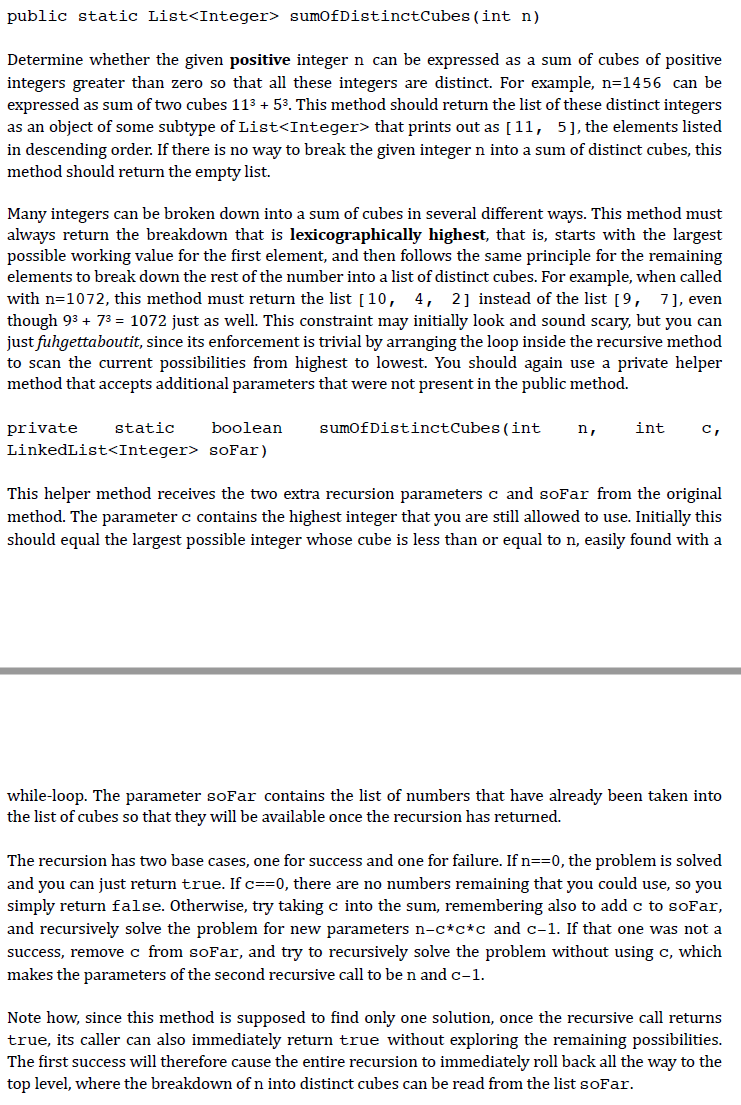Answered step by step
Verified Expert Solution
Question
1 Approved Answer
Need help on Java @Test public void testSumOfDistinctCubes() { // Explicit test cases String b1 = [4, 3]; assertEquals(b1, P2J6.sumOfDistinctCubes(91).toString()); String b2 = [5]; assertEquals(b2,
Need help on Java

| @Test public void testSumOfDistinctCubes() { | |
| // Explicit test cases | |
| String b1 = "[4, 3]"; | |
| assertEquals(b1, P2J6.sumOfDistinctCubes(91).toString()); | |
| String b2 = "[5]"; | |
| assertEquals(b2, P2J6.sumOfDistinctCubes(125).toString()); | |
| String b3 = "[4, 3, 2]"; | |
| assertEquals(b3, P2J6.sumOfDistinctCubes(99).toString()); | |
| String b4 = "[7, 2]"; | |
| assertEquals(b4, P2J6.sumOfDistinctCubes(351).toString()); | |
| String b5 = "[11, 4]"; | |
| assertEquals(b5, P2J6.sumOfDistinctCubes(1395).toString()); | |
| String b6 = "[]"; | |
| assertEquals(b6, P2J6.sumOfDistinctCubes(2020).toString()); | |
| // Pseudorandom fuzz tester | |
| CRC32 check = new CRC32(); | |
| Random rng = new Random(SEED); | |
| int c = 1, step = 2, next = 10; | |
| while(c > 0) { | |
| List | |
| check.update(result.toString().getBytes()); | |
| c += rng.nextInt(step) + 1; | |
| if(c > next) { | |
| next = 2 * next; | |
| step = 2 * step; | |
| } | |
| } | |
| assertEquals(4219145223L, check.getValue()); | |
| } |
Make sure can pass the tester, thanks. I will vote up.
public static ListStep by Step Solution
There are 3 Steps involved in it
Step: 1

Get Instant Access to Expert-Tailored Solutions
See step-by-step solutions with expert insights and AI powered tools for academic success
Step: 2

Step: 3

Ace Your Homework with AI
Get the answers you need in no time with our AI-driven, step-by-step assistance
Get Started


